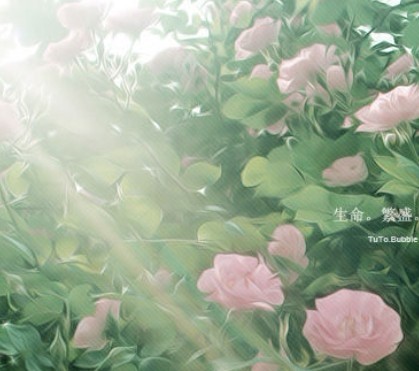2012年3月高級口譯漢譯英原文:傳統的中國畫,不模仿自然,是以表現自然,是以表現心靈舒發性情為主體的意象主義藝術,畫中意象與書法中的文字一樣,是一種適于書寫的極度概括抽象的象征符號,伴隨著意象符號的是傳統的程式表現技巧。古代的大師們創造著獨自心中的意象及其程式,風格迥異,生機勃勃。
后來,多數人慣于對古人程式的模仿,所作之畫千人一面。這樣的畫作一泛濫,雅的不再雅,俗的則更俗。近代中國畫仍然在庸俗沒落的模式漩渦中進退兩難,阿文與當今的有識同行一樣,有志標新立異,尋找自我,建立起現代的屬于自己的新意象、新格局,且一直背靠著高雅的傳統。

譯文: Traditional Chinese painting did not imitate nature; its artistic form of imagery mainly served the purpose of expressing human spirit and disposition. The imagism in the paintings, highly abstract symbols accompanied by images, could be achieved through the conventional artistic formalities, not unlike those found in Chinese calligraphy. Ancient masters created their own internal images and their styles that were all markedly diverse and lively.
Later on, these artistic patterns were imitated and copied to the point where most paintings were nothing but look-alikes. The result of such abuse was that what had meant to be elegant were no longer elegant; what had been considered vulgar were made even more vulgar. Modern Chinese painting is still caught in a downward spiral, a dilemma at best. A Wen and some of his fellow artists are bent on breaking the mold. They want to find their individual identities; they want to be different; they want to create new imageries and new styles that they can proudly call their own and in keeping with the modern times. Meanwhile, they continue to be inspired by the elegance of the past.
評 析:今年的考題是一篇散文,主題是中國畫的過去和現在。文字揮灑自如,極具中文特色,這也是翻譯上最大的難點。在翻譯上,我們可以從文章含義的傳達和文字風格的再現兩個角度去突破。而且,由于不是每個人都有極高的文字能力,所以重點,尤其是在考場的閉卷環境下,是準確、全面地傳達原文含義。追求文字漂亮是要看各自的能力,有當然很好,沒有也屬于正常。
第一,達意。整篇文章分為兩段,第一段主要討論傳統的,或者說過去的中國畫的特點,簡而言之,就是百花齊放百家爭鳴。第二段則是講后人,也就是現在的畫家,一味的模仿古人,沒有自己的特色,導致畫作千人一面。之后是一個轉折,提出了一個名叫阿文的畫家,是跳脫出模仿的怪圈,建立起自己的風格的一個典型。簡單地說,全文從含義上可以總結為三個字:新-舊-新。在翻譯時,我們只要嚴守這條主線,基本上就能完成任務。











